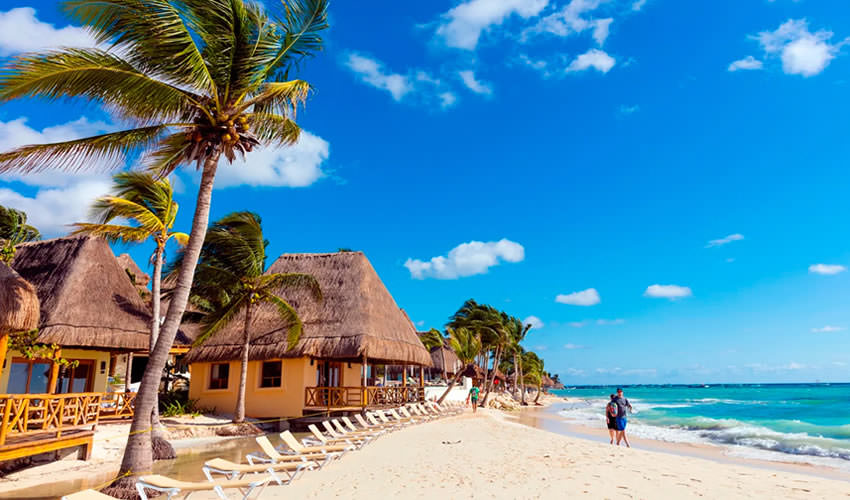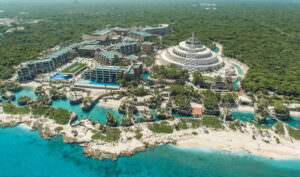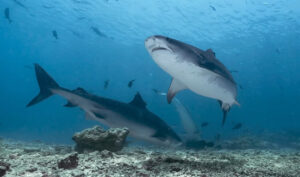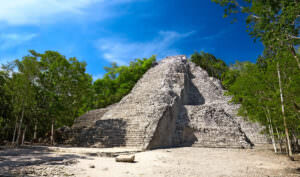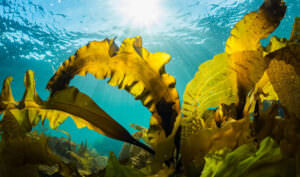The Riviera Maya is a tourism and resort district south of Cancun, Mexico. It straddles the coastal Federal Highway 307, along the Caribbean coastline of the state of Quintana Roo, located in the eastern portion of the Yucatán Peninsula.
Historically, this district started in the city of Playa del Carmen and ended in the village of Tulum. The Riviera Maya includes the municipalities of Solidaridad in the north and Tulum in the south, and extends approximately 40 km inland, to the border with the state of Yucatán.
Although the towns of Puerto Morelos, situated to the north of Playa del Carmen, as well as the town of Felipe Carrillo Puerto, situated 40 km to the south of Tulum, are both currently being promoted as part of the Riviera Maya tourist corridor.
The Riviera Maya was originally called the “Cancun-Tulum corridor”, but in 1999 it was renamed the Riviera Maya with the aid of Miguel Ramón Martín Azueta. At the time, he was the municipal president of Solidaridad, Quintana Roo.
Tourism
The Riviera Maya is famous for its large-scale all-inclusive resorts and a historical tourism base of smaller boutique hotels as well as the many fine-dining restaurants available along the Fed 307 and on or near the beaches.
Luxury travel entities have been instrumental in increasing luxury villa rentals and yacht charters in the area however these only represent a small fraction of the total tourism accommodation available.
Government development plans include establishing a number of medium-sized cities within the Riviera Maya with initial planning spanning 20 years. Target areas for urbanization include the towns and villages of Puerto Aventuras, Akumal, Chemuyil, and Tulum.
A major attraction throughout the Riviera Maya is coastal and aquatic activities. Activities at the most visited locations include jet-skiing, snorkeling, scuba diving, swimming in cenotes, swimming with dolphins, zip-lining, horse riding, sailing, and guided jungle tours.
Archeology is also a big tourist draw in the area, including the popular archeological sites operated by the Instituto Nacional de Archeological such as Tulum on the coast, and Chichen Itza and Coba located some distance inland.
Eco-parks of Xcaret and Xel-Ha also include some smaller archeological ruins as part of their attractions, but these natural water theme parks operated by private business consortia attract much larger crowds due to the diversity and range of activities provided.
History
The history of Riviera Maya dates back to over 10,000 years ago when the first hunter-gatherers arrived in the region.
Yucatan was home to several powerful Mayan city-states, including Tulum, Coba, and Chichen Itza. These city-states were known for their impressive architecture, which included monumental pyramids, palaces, and temples.
The Mayan civilization reached its peak between 600-800 AD.
All city-states in the region were important centers of trade, and the Mayan people were skilled in agriculture, writing, and astronomy. However, in the 10th century, the Mayan civilization started to decline, and the city-states were eventually abandoned.
After the decline of the Mayan civilization, the region was largely uninhabited for several centuries.
It wasn’t until the arrival of the Spanish conquistadors in the 16th century that the area was re-populated. The Spanish brought with them Christianity, and many of the ancient Mayan structures were destroyed or repurposed for Catholic churches.
In the 19th century, the Yucatan Peninsula, which includes Riviera Maya, was a hotbed of political unrest.
The Caste War of Yucatan, a long and bloody conflict between the indigenous and the Mexican government, raged on for over 50 years. The war had a profound impact on the region, and many of the ancient Mayan structures were damaged or destroyed during the conflict.
In the early 20th century, Riviera Maya was still a relatively unknown and undeveloped area.
However, in the 1970s, the Mexican government recognized the potential of the region as a tourist destination and began investing in infrastructure and development. Today, Riviera Maya is a thriving tourism hub, with over 4 million visitors every year.
The region is known for its luxurious resorts, world-class restaurants, and vibrant nightlife.
However, despite its modern amenities, the area still retains its ancient roots. Many of the ancient Mayan structures have been restored and are open to the public, providing visitors with a glimpse into the region’s rich history.
Climate
The mean annual temperature is 24–25 °C. The climate is dominated by a rainy season from May through November, and within the dry season, there is a period dominated by northerly winds, called El Norte, which usually occurs in the months of January and February.
The maximum mean annual precipitation throughout the Yucatán Peninsula occurs along the coast of the Riviera Maya with 1,500 mm of rainfall with a general decline to the NW with only 400 mm per year or less on the opposite side of the Peninsula.
While the Caribbean coast of the Yucatán experiences a large number of tropical storms and hurricanes, the storm tracks and therefore landfalls of these are divergent to both the north (Cancun) and the south (south of Tulum and down to Belize) striking generally outside the Riviera Maya.
Groundwater and therefore cenote water temperatures are 25 °C year-round.
Coastal waters range from 26 °C in January to 29 °C in August.
Geography
The Riviera Maya is completely within the state of Quintana Roo on the Yucatán Peninsula of Mexico. The terrain is flat and covered by a low tropical jungle. The geology is high-purity carbonates down to a depth of 0.5–1.5 km below the surface.
Mean annual rainfall is 1.5 m per year and the efficient infiltration results in the complete absence of any surface rivers.
As is common in karst, underground river networks have formed by dissolution, and these have been explored and mapped by cave diving through sinkhole collapses, locally called cenotes.
The whole of the Yucatán Peninsula is underlain by a density-stratified coastal aquifer system with a lens-shaped freshwater body floating on top of intruding saline water.
The formation of caves within this coastal carbonate aquifer is principally associated with carbonate dissolution at the fresh-saline water contact within the aquifer.
By 2008, the Quintana Roo Speleological Society (QRSS) reported more than 700 km of flooded cave passages within the limits of the Riviera Maya including the two longest underwater cave systems in the world Sac Actun and Ox Bel Ha.
These groundwater resources, accessed via the thousands of cenotes throughout the landscape, once supported the Maya civilizations and today remain the only natural sources of potable water in the area.
The Caribbean coastline is a series of crescent-shaped white sand beaches interrupted every 1–10 km by rocky headlands and inlets, called “caletas”, through which groundwater discharges into the coastal water.
Large sections of the extensive mangrove swamps that lie behind the beaches and headlands are included in the areas scheduled for tourism development.

